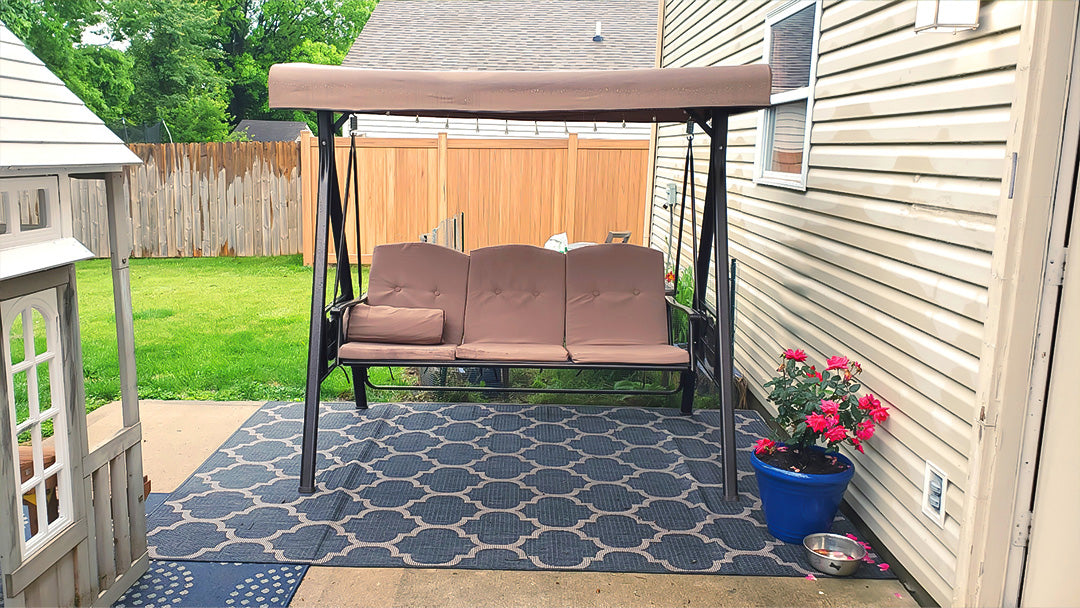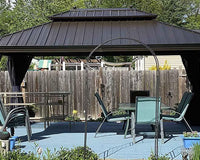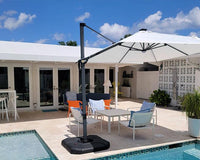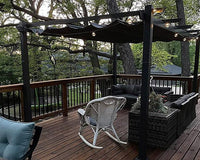Outdoor swings always look great and make a great place to relax and unwind in any area. This piece talks about how long outdoor swings usually last and the things that affect how long they last. Knowing how long different types of swings last is important for both people who want to buy one and people who already have one and want to keep it in good shape. This guide will talk about materials, how they affect the environment, and how to keep them in good shape so that you can make smart choices that will improve your experience on an outdoor swing.
How Long Do Different Types of Outdoor Swings Last?
1. Wooden Swings
A lot of people like wooden swings because they look natural and are strong. A wooden swing will usually last between 5 and 15 years, but this depends on the type of wood that was used. Hardwoods, like teak or cedar, last longer and are better at standing up to the weather than softwoods, like pine.
To protect against water and UV rays, which can cause rotting and fading, seals or stains must be used on a regular basis. When you take care of them properly, like inspecting and refinishing them once a year, they last a lot longer.
2. Metal Swings
Steel or aluminum are common materials used to make metal swings, which are strong and look modern. Steel swings can last between 10 and 20 years if they are taken care of properly, but they need to be protected from rust. Most of the time, this is done by galvanizing or powder coating, which adds a layer of protection against water.

Aluminum swings last longer because they don't rust naturally, but they still need to be cleaned often to stop rusting from outdoor pollutants.
3. Plastic and Composite Swings
Plastic or composite material swings are popular because they are light and don't rot or get damaged by bugs. Most of the time, these swings last between 10 and 20 years, but it depends on the material and how it is exposed.
They don't easily get damaged by water or bugs, but long-term exposure to strong sunshine can fade and break them. But the fact that they don't need much upkeep makes them a good choice for many.
Factors Affecting Lifespan Across All Types
Several things affect how long outdoor swings last, no matter what material they are made of. Weather exposure is a big factor; swings that are left outside in hard weather will break down faster. The frequency of use also affects how long something lasts; heavy use may cause more damage over time. The placement site is also very important; swings that are put down on uneven ground or without the right support may experience structural stress, which shortens their life. These risks can be reduced with regular maintenance and careful placement, ensuring years of pleasure.
How Do Environmental Factors Impact Swing Durability?
Sun exposure can lead to fading and weakening of swing materials, particularly plastics and wood, which may become brittle or discolored over time.

Rain and snow introduce moisture, potentially causing wooden swings to rot and metal swings to rust without proper treatments like sealants or galvanization.
Wind can stress joints and connections, especially if the swing is not securely anchored. Therefore, understanding your local climate is crucial when selecting the best material for your outdoor swing.
In urban settings, pollution can accelerate the deterioration of materials through chemical reactions, while rural areas might expose swings to natural debris that can cause physical wear.
Coastal environments present unique challenges due to higher humidity and salt content in the air, which can expedite corrosion, particularly in metal components.
Selecting materials with appropriate protective coatings and considering environmental factors during installation can mitigate these effects and extend the life of your swing.
Maintain Your Outdoor Swing to Extend Its Lifespan
Routine Inspections
Write down a list of things you need to do to check your swing regularly for cracks, rust, or loose joints. When two or more materials meet, pay close attention. These are often stress places that may show signs of weakness first. If you see any damage, like wood that is splitting or metal that is rusting, you should fix it right away to stop it from getting worse.
Protective Measures
Buy covers that won't get damaged by the weather to protect your swing when it's not in use. Sealants or dyes should be used once a year on wooden swings to protect them from water and UV rays, which will keep them from rotting and fading. An anti-rust covering on a metal swing can help keep it from rusting, especially in wet or seaside areas.

Cleaning and Care
Clean plastic and composite swings with mild soap and water, avoiding harsh chemicals that might degrade the material. Wooden swings should be gently scrubbed with a soft brush to remove dirt and mildew. Aim to clean your swing every few months, adjusting frequency based on weather exposure and usage.
When Is It Time to Replace Your Outdoor Swing?
For safety's sake, you need to make sure that your swing's structure is sound. Look for danger signs like creaks that won't go away, bends that you can see, or cracks that you can see in the materials. These problems could mean that the structure of the swing is weak, which could be dangerous if not fixed. Also, loose bolts or screws should be fixed right away. If these issues don't go away after fixes, it might be time to think about a replacement to be safe.
Aesthetic factors can also mean it's time for a new swing. Significant fading, chipping, or coloring in the paint can make your outdoor space look bad and may also mean that the materials are breaking down. Sometimes, repainting or restoring can fix problems with how something looks, but there are times when that's not enough. Finding the right balance between how nice you want your swing to look and how well it works will help you decide when to buy a new one, making sure you have fun and that it will last.
How to Make Sure Your Outdoor Swing Lasts A Long Time
To sum up, the length of time an outdoor swing lasts depends on the material it is made of, how it is used, and how often it is maintained. If you know about these things, you can make smart choices that will help your swing last longer. To lessen damage from weather and natural pollution, it's important to do regular checks and take protective steps like using seals or covers. Safety and pleasure are also improved by being aware of structural and physical signs that something needs to be replaced. With some proactive care and careful thought, your outdoor swing can remain a beloved place to unwind and enjoy leisure for many years to come.




